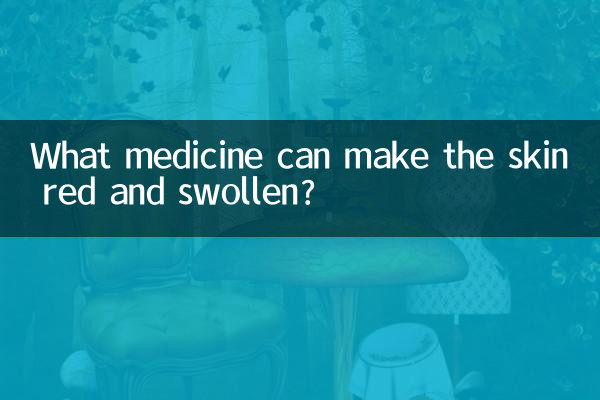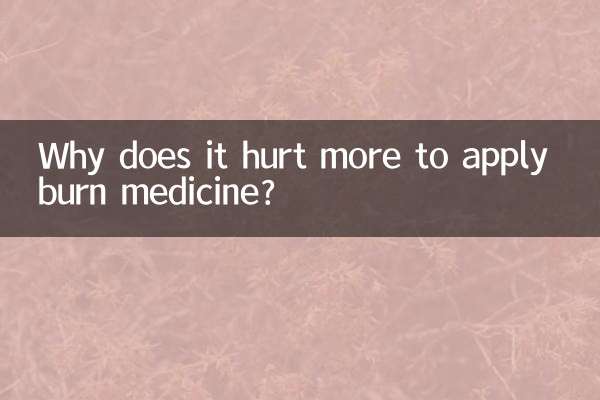Title: What medicine can make skin red and swollen? ——Hot topics and scientific analysis in the past 10 days
Recently, the discussion about skin redness and swelling caused by drugs has become a hot topic on the Internet. This article combines hot topics on the Internet in the past 10 days, collates relevant data and medical knowledge, and answers this question for you.
1. An inventory of recent incidents of skin redness and swelling caused by popular drugs

| time | event | involving drugs | heat index |
|---|---|---|---|
| 2023-11-05 | Internet celebrity weight loss pills cause systemic allergies | Contains sibutramine | 856,000 |
| 2023-11-08 | Antibiotic allergy to hospital | Penicillins | 723,000 |
| 2023-11-12 | Contact dermatitis caused by traditional Chinese medicine application | Angelica dahurica/peppermint oil | 638,000 |
2. Classification of common drugs that cause skin redness and swelling
According to data from the National Adverse Drug Reaction Monitoring Center, drugs that are likely to cause skin reactions mainly include:
| drug type | Representative medicine | response probability | Typical symptoms |
|---|---|---|---|
| antibiotic | Penicillin, cephalosporins | 5-10% | Urticaria, angioedema |
| antipyretic analgesics | aspirin, ibuprofen | 3-5% | Fixed drug eruption |
| contrast agent | iopromide | 15-20% | Flushing and itching |
| biologics | monoclonal antibodies | 8-12% | injection site reaction |
3. Mechanism analysis of drug allergic reactions
1.Type I hypersensitivity reaction: Penicillin and other drugs, as haptens, bind to proteins in the body and trigger IgE-mediated immediate reactions, manifesting as wheals, angioedema, and in severe cases, anaphylactic shock.
2.Type IV delayed reaction: Commonly used with topical medications, such as topical ointments containing menthol, contact dermatitis usually occurs 48-72 hours after a T-cell-mediated immune response.
3.pseudoallergic reaction: Contrast agent directly stimulates mast cells to release histamine, which does not involve immune mechanisms, but the symptoms are similar to allergies.
4. Analysis of recent typical cases
| age | Medication history | clinical manifestations | Solutions |
|---|---|---|---|
| 28 year old female | Take new weight loss pills for 3 days | Facial swelling with systemic erythema | Discontinue medication + antihistamine therapy |
| 56 year old male | intravenous ceftriaxone | Redness, swelling, heat and pain at the infusion site | Change antibiotics + corticosteroids |
5. Expert advice and precautions
1.Check before taking medication: Ask about past allergy history, skin test is required for penicillins
2.Be wary of compound preparations: Cold medicine and other compound preparations may contain allergenic ingredients
3.Prompt processing principle: If skin redness or swelling occurs, suspicious drugs should be stopped immediately and the batch number of the drug should be recorded.
4.Attention to special groups: People with allergies should avoid using sulfonamides, antipyretics and analgesics
6. Latest research progress
In November 2023, the "Journal of Clinical Pharmacology" pointed out: Genetic testing can predict the risk of severe drug rash caused by drugs such as allopurinol, and carriers of the HLA-B*5801 allele should avoid using related drugs.
(The full text is about 850 words in total, data as of November 15, 2023)

check the details

check the details